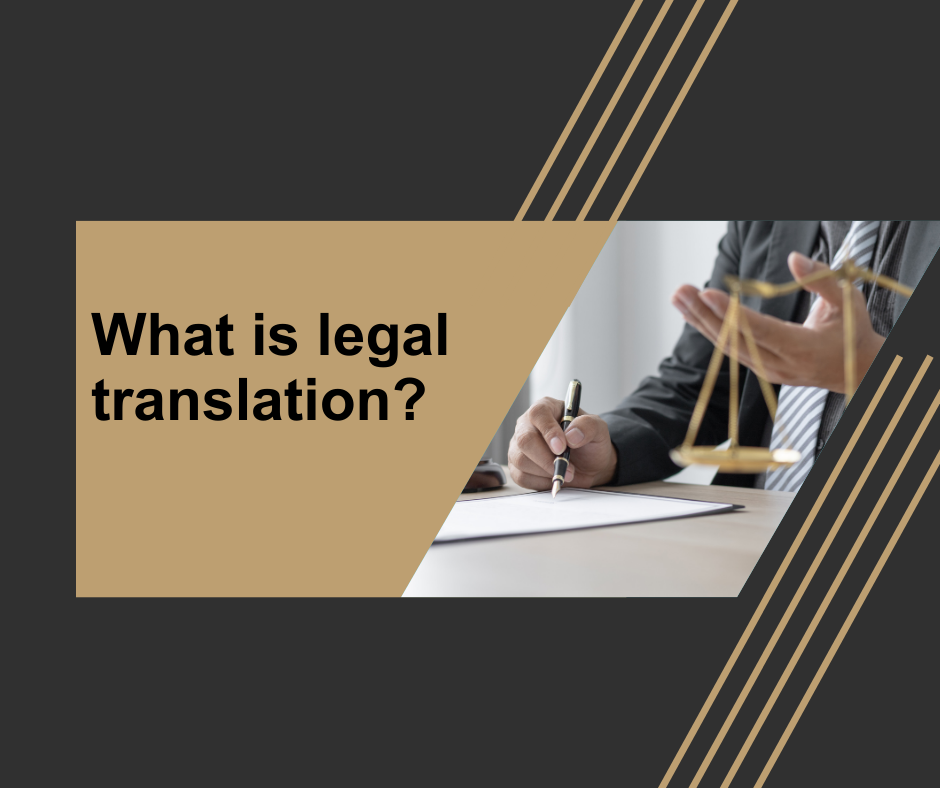Translation Technology: In the ever-evolving world of technology, artificial neural networks are emerging as a game-changer in legal translation. These advanced computational models mimic the human brain’s neural connections, enabling machines to learn and process language accurately. In this blog, we will explore how AI advances are revolutionizing legal translation and discuss the implications of this transformative technology on the legal industry’s future.
Contents
What is legal translation?
Legal translation involves the accurate and precise translation of legal documents and texts from one language to another while maintaining legal integrity.
It encompasses the translation of legal terminology, concepts, and specialized language found in various legal documents like contracts, agreements, court rulings, statutes, and regulations.
Effective legal translation requires a deep understanding of the source and target legal systems and proficiency in the languages involved.
Legal translators
Translators must possess extensive knowledge of legal terminology, procedures, and principles in both legal systems to ensure precise and faithful translations.
The role of a legal translator extends beyond linguistic translation; they must also consider cultural, social, and historical differences that can affect the interpretation and application of legal concepts.
Translated legal documents must preserve the same legal impact and convey the intended meaning of the original text.
It is essential to accurately reflect the source language’s legal rights, obligations, and consequences into the target language.
Also know: What is a legal translation?
Legal translation trends
There are a range of powerful tools and software solutions to meet the needs of the specialized legal field.
These tools streamline the translation process and enhance the quality and precision of legal translations.
With these innovative tools, language professionals can confidently undertake legal translations, ensuring their work’s utmost precision and reliability.
1- MemoQ
MemoQ is a leading computer-assisted translation (CAT) tool that effectively streamlines the legal translation process.
Utilizing features such as translation memory, terminology management, and automatic quality assurance tools, memoQ accelerates the translation process and enhances the overall quality.
Its consistent approach to language translation and specialization in domain-specific terminology instills confidence in language professionals when undertaking legal document translation.
2- SDL Trados
SDL Trados is another noteworthy CAT tool for legal and certified translation services.
It empowers translators to work at double speed while ensuring accuracy by avoiding ambiguities, inconsistencies, and other errors.
SDL Trados offers stringent control over access rights, particularly valuable for those working on legal documents who can rely on the software to prevent any potential legal issues from incorrect translations.
3- ABBYY FineReader
ABBYY FineReader addresses the unique challenge of translating legal documents that may not always be available in electronic format.
Translators dealing with handwritten papers or legal website pages can benefit from this exceptional optical character recognition application.
ABBYY FineReader transforms document images into editable files, supporting various commonly used formats and facilitating translation.
4- Dragon NaturallySpeaking
Dragon NaturallySpeaking is a trusted software for transcription work for legal translation services.
Known for its superior speech recognition technology, Dragon NaturallySpeaking accelerates the transcription and translation process while maintaining high-quality standards.
Legal translators can rely on this software to increase efficiency without compromising accuracy.
5- Linguee
Linguee is a valuable resource for legal translators, providing a robust multilingual dictionary that offers reassurance and support.
Going beyond a traditional dictionary, Linguee enables users to search through a vast database of 1,000,000,000 translations, encompassing both words and expressions.
Additionally, Linguee allows users to verify context and even access relevant images.
This convenient tool also offers insights into how others have translated specific phrases, enhancing its utility for legal translation professionals.
Also know: Legal Translation in Dubai: What You Need to Know
AI effect on legal translation future “Translation Technology”
Translation has drastically changed in recent years due to Artificial Intelligence. Machine translation has dramatically improved, resulting in fewer mistranslations and more natural language use.
Consequently, many people increasingly rely on these tools instead of human translators to translate various documents.
Machine translation vs human translation
Quality:
Human translation provides higher accuracy, particularly for legal and technical documents.
A team of skilled linguists and legal experts can make well-informed decisions on the most appropriate translations.
Speed:
In legal proceedings, meeting deadlines is of utmost importance. If swift turnaround time is a priority, MT surpasses other options.
It can swiftly translate vast volumes of data that would be impossible for humans to match.
Cost:
Significant cost savings can be achieved by opting for MT over human translators.
MT’s unparalleled efficiency and speed contribute to reducing expenses.
Can machine translation be relied upon for legal translations?
Without a doubt, machine translation saves time and can generate good translations for many standard phrases and conventional sentences.
Nevertheless, specific observations become apparent as one continues working with these tools, including:
- They do not always capture the essence of the target language.
- They lack consciousness, which is the primary challenge faced by AI.
Attempting to confine it within a complex network of rules, such as legal documents, remains a distant possibility.
Consequently, machine translation often feels like ill-fitting clothes, as its output is never custom-made for the specific task but rather a generic “one size fits all” result.
When can you use machine translation?
Machine Translation is prone to introducing errors and often lacks the natural flow and idiomatic expressions found in human translations.
While budget and speed may be primary concerns, they are not the sole factors to consider when utilizing MT. You can use machine translation only for the following:
- Non-critical content: When the translated content is not crucial for legal proceedings or solely intended for internal discovery purposes.
- Only gisting: When the translation is required for basic understanding and actionability, allowing for acceptable errors as long as the overall message is comprehensible.
- Straightforward content: When the content is explicit, devoid of cultural nuances and creative expressions.
When must you use human legal translation?
On the other hand, some situations warrant the use of human translation despite advancements in AI and neural machine translation:
- Legal priority: When the content is significant to the legal team and necessitates utmost accuracy.
- Cultural understanding: When the content relies on cultural context and demands in-depth knowledge.
- Creative language: When legal documents employ creative language that machines cannot effectively translate.
- Complex projects: When the project is intricate and calls for collaboration among professional translators.
Also know: A Guide to Finding the Best Legal Translation Provider
How can legal translators preserve their role and thrive alongside AI advancements?
Legal translators can take proactive steps to keep up with AI advancements and preserve their role in the face of technological advances. Here are some strategies:
Continuous learning
Stay updated on the latest AI and machine translation technology developments.
Attend industry conferences, workshops, and webinars to learn about new tools and techniques.
Keep up with research papers and publications in natural language processing and machine learning.
Specialize in complex legal content
Focus on legal translation areas requiring specialized knowledge and expertise.
Develop proficiency in translating complex legal documents, contracts, intellectual property, or specialized legal fields.
This specialization makes it harder for AI to replace human translators due to the intricacies and nuances involved.
Offer value-added services
Provide services that go beyond translation. Offer additional expertise, such as legal consulting, localization, cultural adaptation, or quality assurance.
Position yourself as a language professional who understands the legal context and can provide comprehensive solutions.
Embrace AI tools
Incorporate AI translation tools into your workflow to enhance efficiency and productivity.
Learn to use machine translation systems as a starting point and leverage AI-powered tools for terminology management, quality control, and post-editing.
This way, you can work in tandem with AI, utilizing it as a valuable tool rather than perceiving it as a threat.
Cultivate client relationships
Build strong relationships with clients by offering personalized services and understanding their needs.
Highlight the advantages of human translation, such as accuracy, cultural sensitivity, and subject matter expertise.
Adapt and evolve
Be open to change and adapt your skills to meet evolving industry demands.
Stay agile and embrace new technologies like cloud-based translation platforms, collaborative tools, and project management systems.
Constantly assess and upgrade your skill set to stay competitive in the changing landscape.
In conclusion, the future of legal translation is shaped by AI, which has transformed the industry but won’t replace human translators entirely. AI has improved machine translation tools yet struggles with context and nuances. Integrating AI offers cost and time savings, especially for large datasets, but human translators are crucial for quality.
The future lies in a collaborative approach, combining AI power with human expertise. Just as transcreation relies on humans, translators ensure accurate conveyance. This future blends technology and human ingenuity, creating growth opportunities. By embracing AI’s potential while upholding human artistry, legal translation holds promise for translators and clients.
If you are looking for legal translation services, it is important to choose a provider that is up-to-date on the latest trends and innovations. This will ensure that you get the most accurate, efficient, and cost-effective translation services possible. Contact us today to learn more about how we can help you with your legal translation needs.




